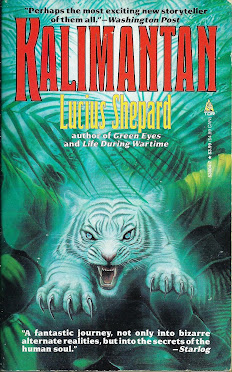edited by Andrew E. C. Gaska
Archaia / Black Label September, 2013
‘Space : 1999’ premiered on Britain’s ATV channel on September 4, 1975. The series, which eventually lasted for 48 episodes until November 1977, was produced by the UK studio ITV.
Outside the UK its appearance was irregular; in the US, the major networks refused to purchase the show, and it wound up being syndicated, with the first episode airing in selected viewing areas in the Fall of 1975.
I never watched any episodes, as the show was never featured on the four channels (PBS, NBC, ABC, and CBS) we had access to at my house back in those ancient days of television. By the standards of the time the show was very costly to produce, and the lack of advertising revenue in the US was probably one of the reasons why a third season was never filmed.
Also, Space: 1999 wasn’t very good.
As part of the promotion and marketing for the show, Charlton comics launched both a color comic book, and a black and white comic magazine, for Space: 1999. The b & w magazine premiered in the Fall of 1975, with a November, 1975 cover date, and ran for 8 issues, until October, 1976.
The contents for some issues can be downloaded as .cbr and .cbz files from here.
The
first issue of the color comic also bore a November, 1975 cover date, and
ultimately lasted for 7 issues until November, 1976. A series of reprints and
one-shots also appeared on a sporadic basis.
So….this brings me to ‘Classic Space: 1999: To Everything That Was’ (304 pp., Archaia, August 2013). It’s as weird a book as its title.
Apparently, editor and Space: 1999 Fanboy Andrew Gaska decided to pick selected stories from the 1975 – 1976 Charlton b & w magazines, colorize them, and republish them as part of this ‘remastered’ volume from Archaia Black Label, an indie digital comic / graphic novel publisher from Chicago who may be best known for publishing the ‘Mouse Guard’ comics.
Apparently, editor and Space: 1999 Fanboy Andrew Gaska decided to pick selected stories from the 1975 – 1976 Charlton b & w magazines, colorize them, and republish them as part of this ‘remastered’ volume from Archaia Black Label, an indie digital comic / graphic novel publisher from Chicago who may be best known for publishing the ‘Mouse Guard’ comics.
Archaia also publishes entirely new content for the Space:
1999 franchise, content also edited by Gaska, some of which has been compiled
in another graphic novel titled ‘Space: 1999: Aftershock and Awe’.
‘Classic Space: 1999: To Everything That Was’ is carefully
packaged to avoid indicating to the potential reader that its contents are 40
year-old black and white comics, comics that have been ‘reimagined’ to give the
impression that they are new content.
For example, Gaska includes no Table of
Contents, and there is no copyright or licensing information to divulge what
issues of the original Charlton magazines the ‘reimagined’ stories are adapted
from. The end pages of ‘To Everything’ do feature a cover gallery of some of
the issues of the color comic and the comic magazine (with date, pricing, and number information deleted), but there is no
ancillary text to notify the reader which ‘reimagined’ stories are associated with the depicted issues of the Charlton comics.
Gaska’s approach to the Space: 1999 franchise is one that is
therefore carefully calculated to provide enough Ambiguity of Attribution to
give the impression that ‘Creative Director’ Gaska is the writer and creator of
the contents. I don’t agree with this approach, and neither, it seems, do a lot
of sf comics fans; one reviewer at amazon.com remarks that:
So, with the backstory properly introduced, it’s time to ask, just how good – or bad - is ‘Classic Space: 1999: To Everything That Was’ ?
My opinion is that the stories Gaska picked for representation here are no better, and no worse, than the other sf comics, based on licensed properties, that were issued steadily throughout the 70s. Comics like Gold Key / Western’s ‘Star Trek’ series, Marvel’s ‘Unknown Worlds of Science Fiction’, or Marvel’s ‘Logan’s Run’ series, among others.
My opinion is that the stories Gaska picked for representation here are no better, and no worse, than the other sf comics, based on licensed properties, that were issued steadily throughout the 70s. Comics like Gold Key / Western’s ‘Star Trek’ series, Marvel’s ‘Unknown Worlds of Science Fiction’, or Marvel’s ‘Logan’s Run’ series, among others.
The colorization of the original artwork relies on a muted palette, with an emphasis on Earth Tones, which means that it’s a bit difficult to see just how well-done the original artwork actually was. Some of this original artwork (referred to by Gaska as ‘visualizations’) was done by industry legends such as Gray Morrow, and a young John Byrne.
It seems to hold up well in this reprinting, although at 6 ¾ inches x 10 ¼ inches, the dimensions of ‘Classic: Space 1999’ are considerably smaller than those of the original Charlton magazines, which means that the artwork and text are reduced in size and older readers are probably going to need glasses to make out the text.
Summing up, it’s hard not to conclude that the ‘Space: 1999’ comics franchise would have been just as well served by being reprinted, in chronological order, in the same style and formatting that Marvel and DC use for their older comics, including the ‘Essentials’ and ‘Showcase’ formats.
‘Classic Space: 1999: To Everything That Was’ is really only for the hardcore fanboys.
‘Classic Space: 1999: To Everything That Was’ is really only for the hardcore fanboys.













































